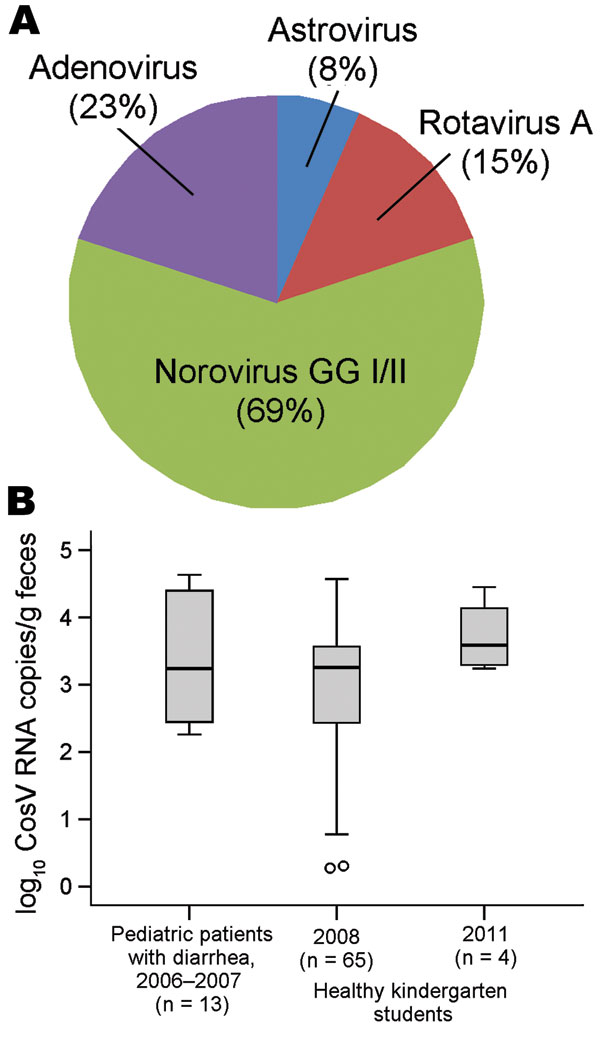Volume 18, Number 4—April 2012
Dispatch
Cosavirus Infection in Persons with and without Gastroenteritis, Brazil
Figure 2

Figure 2. Co-infections and fecal cosavirus (CosV) RNA concentrations. A) Co-infections with established viral causes of diarrhea in children with gastroenteritis who were positive for CosV. Viral RNA and DNA were detected by real-time PCR (methods available upon request) in the same eluates used for CosV detection. B) Boxplot generated with SPSS V19 (SPSS, Munich, Germany) of log10 CosV RNA concentrations per gram of feces in children with gastroenteritis and healthy control children from a child-care center in 2008 and 2011. Boxes show the medians and interquartile ranges (box length). The whiskers represent an extension of the 25th or 75th percentiles by 1.5× the interquartile range. Datum points beyond the whisker range are considered as outliers and marked as circles. GGI/II, genogroups I and II.
1These authors contributed equally to this article.